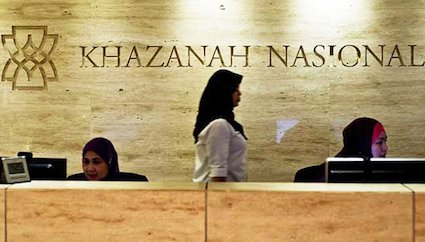Contradictheory: Is the public shaming of Khazanah really necessary?

Dzof Azmi, Star 2
Before news emerged of Khazanah’s failed RM80mil investment in online lingerie business Zivame, and the RM1.7bil loss in a not-that-clear deal with UBS investment bank, Prime Minister Tun Dr Mahathir Mohamad made a cryptic statement about Khazanah deviating from its “original focus” of helping bumiputras grow their ownership in companies.
Since then, I understand the board tried to meet with the PM. And then they decided to submit undated resignation letters. And then everybody in Khazanah was asked to update their CVs. It sounds like something that would happen in a failing company, not the 11th biggest sovereign wealth fund in the world dealing with non-commodity investments.
Before I go on, some disclosure: I used to work for an organisation that was under Khazanah, and received my pay cheques from it for a while. As part of the extended family I had the opportunity to learn a little bit more about this organisation and how it did things.
In preparing this column, two documents were useful: an article titled “Khazanah Nasional: Malaysia’s Treasure Trove” by Jikon Lai which was published in the Journal Of The Asia Pacific Economy in 2012; and the farewell letter penned this week by former Khazanah managing director Tan Sri Azman Mokhtar, which is a delicate combination of fact and emotion, of mind and heart, plus a little bit of soul thrown in too. (See the letter at The Star Online.)
To put it briefly, Khazanah was founded in 1994 with an endowment of RM7bil and mandated with two objectives: To manage commercial assets owned by the Federal Government; and to make strategic investments that would contribute to nation-building.
After the Asian financial crisis of 1997, Khazanah stepped in to help companies like Danaharta, Bank Bumiputera and Renong. However, the aid was construed by some as bailouts of government cronies, and it didn’t help that operations were a bit shrouded and mysterious. This criticism led to a restructuring of Khazanah in 2004. Azman was hired to improve financial returns and to help government-linked companies (GLCs) to improve their performance (which would improve the nation’s economy).
More importantly, to clean up Khazanah’s reputation, the decision was also made to improve transparency and accountability. Best practices were enacted both in Khazanah and the GLCs it managed (like Malaysia Airport Holdings and UDA Holdings).
Various multicoloured “books” came from this, to guide good corporate governance and practices – for example, the Orange Book about leadership development was something frequently referred to in my organisation to develop local talent.
The upshot? GLCs did not need government assistance during the 2008-2009 financial crisis and could stand on their own, a testament to their improved performance.
And how about the investments, especially the ones abroad, that Khazanah has been criticized for? By 2015 roughly 40% of assets were international. Its most famous investment must have been when it put US$240mil (RM980mil) into a small China startup called Alibaba, which then went public with a record IPO, and from which Khazanah has made RM6bil in gains to date.
Overall, Khazanah’s portfolio value has risen from RM33.3bil in May 2004 to RM115.6bil in December 2017. It rather puts into perspective the RM80mil lost in a lingerie company, or even the RM1.6bil lost in an investment bank. In fact, the two biggest losses faced by Khazanah have been its investments in Malaysia Airlines (RM8.4bil) and semiconductor manufacturer Silterra (RM5.5bil). All this despite Khazanah having such close links with the government.
It must be noted, by and large, these investments have been made off the back of its profits, without any additional inputs by the Government (the exceptions I know of are RM10bil for the development of Iskandar Malaysia, and RM1bil for the rollout of the nation’s high-speed broadband network).
For me, the criticisms seem petty when contrasted with what Khazanah has done as a whole. For the last decade or so, it has been fairly transparent in its dealings (more so than a certain four-letter sovereign wealth fund), improved the standing of GLCs, and made a bunch of money to boot.
Perhaps Khazanah should be more fairly compared with other similar GLICs (government-linked investment companies) in Malaysia. Perhaps there’s a reason why the magnifying lens hasn’t strayed far.
But more importantly, the things that stood out the most for me about Khazanah cannot be seen on a profit/loss sheet. In one of our early meetings with Azman, two things stuck in my mind. One was the passion with which he spoke about Yayasan Hasanah, the foundation set up by Khazanah that has a RM3bil endowment (the principal is not touched, only profits generated by it become grants).
Secondly, he asked me how many leaders did I think Malaysia needed to be successful? And from there began a conversation about how the efforts of a few people could make a difference for many others.
The recent public attacks on Khazanah are, in my opinion, unwarranted. Because the directors offered to resign, there was, in effect, a bloodless coup. But because the company is owned by the Finance Ministry, there must have been a better, more gradual way to hand over the reins if the ministry was not satisfied with the directors.
Instead, we get this public shaming and, presumably, similarly public “saving” of the company.
Is this to be the hallmark of how the Government will manage institutions? To cast fear and doubt by cherry picking facts? To effectively bully people into stepping down?
One of the criticisms of the former Government was that there was a lack of transparency that hid shady dealings. When Khazanah was faced with this accusation a decade ago, it stepped up, reformed and showed that a government-owned company could be fair and transparent. Perhaps that, above all others, is the true legacy that we ought to treasure.

